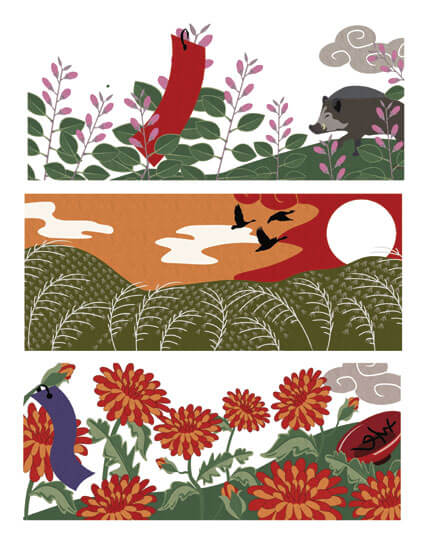

Hanfuda cards are inspired by mono-awase, a game for the rich to compare objects.Īfter mono-awase, kai-awase became popular. These Japanese playing cards were created to help citizens get around gambling bans in the 17 th century. Hanafuda are foreign playing cards that can be used for various games, like Koi Koi. But what do the cards mean and how are you supposed to play it? Continue reading as we dive into this centuries-old traditional Japanese card game. You may have seen these cards featured in Japanese films and may be creatively sported as earrings. New Zealand schools and early childhood centres must retain a focus on play in their curricula," says Dr Low.Hanafuda cards are a large part of Japanese culture, originating in the Heian era. "It is vital that play is valued as a key way children learn and develop. Outside the home, they advocate the lower-cost provision of early-childhood education and investment in community initiatives such as Play Streets and Play Festivals. She lists those as improved paid parental leave better access to mental-health treatment and support to help affected parents bond and actively engage with their children and increasing home ownership rates so families can settle in an area and build community bonds. "Three areas of social policy have the potential to greatly assist whÄnau with this," says Ms Wilkinson. The researchers acknowledge, however, that societal and economic realities can make it hard for caregivers to find the time and energy to devote to play. Key characteristics of play, such as its engaging and iterative nature, help children’s brains develop and strengthen the connections needed for learning. In these studies, babies and preschoolers who were played with by a sensitive and responsive parent had increased grey-matter volume. Similar effects have been seen in human brain imaging studies. In rats, play appears to create lasting changes in areas of the brain relating to thinking and social interactions, stimulating production of new brain cells and the connections between them. The researchers’ conviction that play helps with brain development is based on animal and human studies. "Children allowed to freely explore toys by themselves find more functions and imaginative ways to use them than children who are shown how a toy works," Dr Low says. "Serve and return is focused, two-way communication where one player ‘serves’ - using cues such as sounds, smiles and gestures - and the other person responds in the same way, thus ‘returning the serve’," she says.Īs children get older, adult participation that acknowledges and builds on toddlers’ play fosters more creative play compared with adult direction.

"Serve and return" interaction between an adult and child, which is a form of responsive play, can begin at birth, says Dr Low. It also makes learning fun and helps literacy and numeracy.ĭr Low, who leads Koi TÅ«’s Knowledge Hub for Maternal and Child Health which is funded by the Wright Family Foundation, says time spent by caregivers actively and warmly engaging with children in play has a direct and positive effect on development. Through play, children gain the cognitive skills needed for school, she says. It has a fundamental role in children’s wider development and improves social and emotional skills, physical skills and family well-being," says Chloe Wilkinson, who researches maternal and infant health and the developmental origins of health and disease.

What’s more, they point out expensive toys aren’t a requirement for creative and engaging play, for which everyday objects such as blocks, balls, pots and pans and pencils and paper are perfectly adequate. In a new Koi TÅ« evidence brief Ahead of the game: Why play is the key to children’s future success, the researchers say although children are geared to find play opportunities in almost any circumstances, the developmental payback is all the greater when adults participate. Researchers Chloe Wilkinson and Dr Felicia Low at Koi TÅ«: The Centre for Informed Futures, a think tank at Waipapa Taumata Rau, University of Auckland, have come up with a long list of compelling benefits of play for child development. Sending kids out to play not only gives caregivers a break but also sets the youngsters up for life. With brain imaging studies showing children grow more grey matter if they are stimulated by play, it’s a no-brainer to give caregivers every opportunity to maximise the fun.


 0 kommentar(er)
0 kommentar(er)
